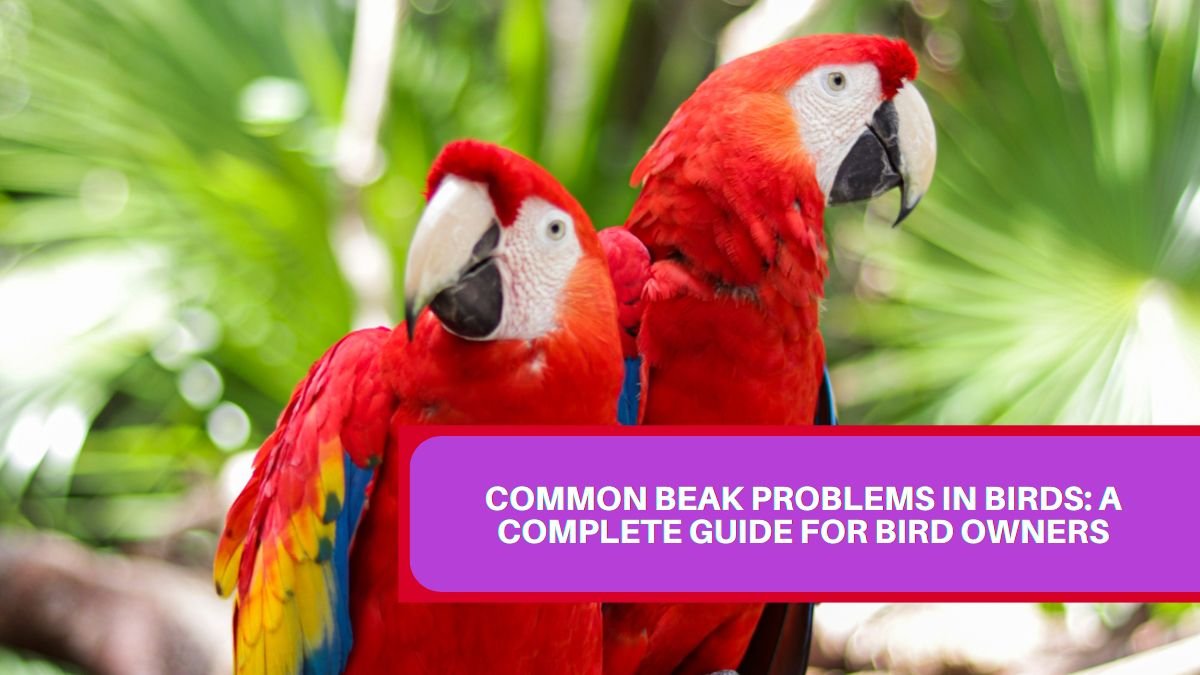Beak problems in birds are more common than you might think. These issues can make it hard for birds to eat, drink, or even play. A healthy beak is essential for a bird’s daily life. In this article, we will explore the types of beak problems birds face, their symptoms, causes, how they are diagnosed, treated, and ways to prevent them. Understanding these issues can help bird owners keep their feathered friends healthy and happy.
What Are Common Beak Problems in Birds?
Beak problems refer to any changes in the shape or condition of a bird’s beak. Birds use their beaks for many tasks, such as eating, drinking, climbing, and playing. If a bird has a beak problem, it can struggle with these daily activities. Common beak issues can happen to any bird species, from large macaws to small budgies.
Symptoms of Common Beak Problems
Birds show various signs when they have beak problems. Here are some common symptoms to watch for:
Holes or Pitting
A healthy beak should be smooth. If you see holes or pits, this indicates a problem. These holes can weaken the beak and make it easier for infections to occur.
Discoloration
Beaks come in different colors depending on the species. If a part of your bird’s beak changes color, it could be a sign of an issue.
Softening
A bird’s beak should feel hard and sturdy. If it becomes soft or bendable, this is a serious problem. Soft areas can lead to holes and further issues.
Peeling or Flaking
Birds’ beaks are made of a material called keratin, which is similar to our nails. A little flaking is normal, but excessive peeling can mean your bird’s beak is unhealthy.
Cracks
A healthy beak shouldn’t crack easily. If you notice cracks, it may be due to an injury or a health issue.
Pieces Breaking Off
While small pieces might break off naturally, large chunks coming off is not normal and could indicate trauma or health problems.
Overgrowth
Beaks grow continuously. If they don’t wear down naturally, they can become overgrown. This can prevent birds from eating or climbing properly.
Abnormal Shape
Each bird species has a unique beak shape. If your bird’s beak grows in an unusual way, it may signal an underlying problem.
Causes of Beak Problems in Birds
Many factors can lead to beak problems, and most of them are preventable:
- Infections: Bacterial or fungal infections can harm the beak.
- Injuries: Trauma can cause significant damage.
- Cancer: Tumors can form on the beak, needing veterinary attention.
- Nutritional Deficiencies: Lack of essential vitamins and minerals can weaken the beak.
- Developmental Abnormalities: Some birds may be born with beak issues.
- Liver Disease: This can affect the health of the beak.
- Lack of Chew Toys: Birds need appropriate toys to help keep their beaks healthy.
Diagnosing Beak Problems in Birds
To find out the cause of a beak problem, a veterinarian will first talk to you about your bird’s environment and diet. They may perform a physical examination and take blood samples to check for underlying health issues or infections.
Treatment
Once the cause is identified, a treatment plan can be made. This may include:
- Beak Trimming: To manage overgrowth.
- Medications: To treat infections or other diseases.
- Dietary Changes: To ensure your bird gets all necessary nutrients.
- Environmental Modifications: To provide better chew toys and perches.
Prognosis for Birds With Beak Problems
Most beak problems can be corrected or managed. If the issue stems from diet or environment, the outlook is usually good. However, problems caused by serious diseases like cancer may have a less favorable prognosis.
How to Prevent Beak Problems
Preventing beak issues is crucial for your bird’s health. Here are some tips:
- Proper Nutrition: Ensure your bird’s diet has all the vitamins and minerals it needs.
- Safe Environment: Provide safe spaces and toys to prevent injuries.
- Chew Toys: Offer appropriate toys that help wear down their beaks naturally.
By following these guidelines, bird owners can help their pets live healthier and happier lives.
In summary, beak problems in birds can lead to serious challenges in their daily activities. Understanding the symptoms, causes, and preventive measures can empower bird owners to provide better care. Regular veterinary check-ups and a balanced diet play key roles in maintaining beak health. By being proactive, you can help your feathered friend thrive!
FAQ’s
What are common beak problems in birds?
Common beak problems include holes, cracks, overgrowth, discoloration, and soft spots that affect a bird’s ability to eat and function normally.
What causes beak problems in birds?
Causes can include infections, injuries, nutritional deficiencies, cancer, and lack of appropriate chew toys.
How can I tell if my bird has a beak problem?
Look for symptoms like abnormal shapes, peeling, flaking, or any signs of discomfort when eating or climbing.
How are beak problems diagnosed?
Veterinarians diagnose beak problems through physical exams, discussions about diet and environment, and laboratory tests if needed.
What treatments are available for beak problems?
Treatments may include beak trimming, medications, dietary changes, and improving the bird’s environment with proper toys.

